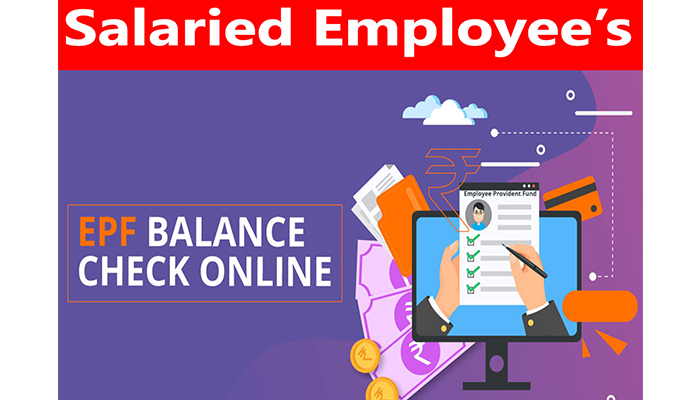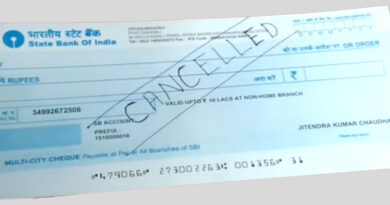How to Check Your Employees’ Provident Fund Balance (EPF)
As an employee, one of the benefits you might receive from your employer is the Employees’ Provident Fund (EPF). This fund is a retirement savings scheme that helps employees save for their retirement by making regular contributions. In this article, we will discuss everything you need to know about EPF, including what it is, how it works, and how to check your EPF balance.

What is Employees’ Provident Fund (EPF)?
Employees’ Provident Fund (EPF) is a retirement savings scheme that is available to all salaried employees in India. It is a statutory contribution-based fund, where both the employer and the employee contribute a certain amount of money each month. The contributions are made towards a retirement savings account, which is managed by the Employees’ Provident Fund Organisation (EPFO).
How Does EPF Work?
The EPF scheme is mandatory for all employees earning a salary of less than Rs. 15,000 per month. The employer and the employee both contribute 12% of the basic salary and dearness allowance towards the EPF account. The contribution made by the employer includes 3.67% towards EPF and 8.33% towards the Employee Pension Scheme (EPS). The contributions made by the employee are entirely towards the EPF account.
The contributions are made each month and are credited to the employee’s EPF account. The EPF account earns interest, which is decided by the government each year. The interest earned on the EPF balance is tax-free. The EPF balance can be withdrawn by the employee at the time of retirement.
The EPF balance can be checked using one of the following Methods
Now, checking EPF becomes easy in just a few steps. However, you do not have to go out to check the balance of your EPF account. You can check your EPF account balance in four ways. Such as the Umang App, EPFO portal, SMS service, and Missed Calls. Let’s move further and learn about the easy methods of checking the EPF balance.
1. By Umang App
Workers can check their EPF balances using the Umang app on their smartphones. UMANG is referred to as the unified mobile application for new-age governance. The government released the Umang app to make it easier for citizens to access a variety of government services from one location. Using the app, you can see your EPF passbook, submit a claim, and even keep track of it.
How to Use the UMANG App On Your Mobile Phone Download
Step 1 :
The app from the Play Store and install it on your phone. Then, open the EPFO option. To begin, you’ll need to enter your phone number during a one-time registration process.
Step 2 :
Secondly, choose the Employee Centric service from four options.
Step 3 :
Lastly, after clicking on employee centric service, you will find the “view passbook” option. Therefore, two options will pop up; choose the View Passbook option. As a result, all the transactions will be displayed.
2. By EPFO Portal
The EPFO will be hosting a new website where users can access their EPF passbooks instead of the unified portal. Nonetheless, transferring money by using transactional services can still be performed using a platform.
To access your EPF passbook on the portal, you must have your Universal Account Number (UAN) attached to your account. Your EPF passbook is available for download and printing on the website. This is how you do it.
Step 1:
Go to https://www.epfindia.gov.in/site_en/index.php to access your EPFO portal.
The member’s passbook can be found on the epfindia website:
Step 2:
Under “Our Services,” click on “For Employees.”
Step 3:
Under “Services,” click on “Member Passbook.”
Step 4:
After a member of the EPF account must enter his UAN number and password. Later, fill in the captcha details and you will be able to log in.
Lastly, you will be able to check your EPF balance on the EPFO portal by entering the required details.
3. By Sending a Text Message
Sending an SMS to 7738299899 will provide you with the most recent information on your contributions and EPF balance if your UAN is registered with the EPFO.
Type EPFOHO UAN ENG in the message you need to send. To begin with, “ENG” is the abbreviation for “English.” To receive the message in Marathi, simply put EPFOHO UAN MAR into the message field.
The service is offered in English (the default), Hindi, Punjabi, Gujarati, Marathi, Kannada, and Telugu languages.
4. By Giving Missed Call
● A missed call to 011-22901406 from your registered mobile phone will yield the information if you’re registered on the UAN portal. Aadhaar and your Permanent Account Number (PAN) should all be included in your UAN. In addition, you might ask your company to seed them for you. This is a free service.
● The EPFO App was once used to check EPF balances, but this feature has since been withdrawn.
● The M-Sewa app, which can be downloaded from the Google Play Store, was previously used by EPF members to check their balances. However, as of right now, this service is no longer available.
● According to that website’s announcement, UMANG EPFO services are now accessible via the Member e-Sewa portal, according to the announcement (Unified Mobile APP for New Governance).
● You can get the UMANG APP by dialling 9718397183 from your phone’s dormant mode. You may also get the APP from the following website.
Calculation of EPF Contributions
Both the employee and the employer are required to contribute 12% of the employee’s basic salary and dearness allowance to the EPF fund. The employer’s contribution is split into two parts: 3.67% is contributed towards the Employee Pension Scheme (EPS), and the remaining 8.33% is contributed towards the EPF account. If an employee’s salary is above a certain threshold, the contribution towards the EPS is capped at a maximum amount.
For example, if an employee’s basic salary is Rs. 20,000 per month and the DA is Rs. 5,000 per month, the monthly EPF contribution would be:
Employee Contribution: 12% of (20,000+5,000) = Rs. 3,400
Employer Contribution to EPF: 3.67% of (20,000+5,000) = Rs. 915
Employer Contribution to EPS: 8.33% of (20,000+5,000) = Rs. 2,083
Total Monthly Contribution: Rs. 6,398
Interest Rate
The EPF interest rate is declared by the government every year. For the financial year 2022-23, the EPF interest rate is 8.5%. The interest is calculated on a monthly basis and is credited to the employee’s EPF account annually.
EPF Withdrawal Rules
An employee can withdraw the accumulated EPF balance in certain situations, such as:
Retirement – An employee can withdraw the entire EPF balance after reaching the age of 58 years.
Resignation – An employee can withdraw the EPF balance if they remain unemployed for two consecutive months after resigning from their job.
Medical Emergency – An employee can withdraw up to six times their monthly basic salary and dearness allowance or the total EPF amount, whichever is lower, in case of a medical emergency.
Education – An employee can withdraw up to two times their basic salary and dearness allowance or the total EPF amount, whichever is lower, for their own or their children’s education after completing seven years of service.
Partial Withdrawal
In addition to the above situations, the EPF scheme also allows for partial withdrawals for specific purposes. An employee can withdraw up to three times their monthly basic salary and dearness allowance or the total EPF amount, whichever is lower, for the following reasons:
Marriage – An employee can withdraw for their own marriage, their children’s marriage, or their siblings’ marriage after completing seven years of service.
House Purchase/Construction – An employee can withdraw for the purchase or construction of a house after completing five years of service.
Loan Repayment – An employee can withdraw to repay a loan for the purchase of a house, for medical treatment, or for higher education after completing ten years of service.
It is important to note that EPF withdrawal for non-specific reasons or to cover personal debts is not allowed. If an employee withdraws
the EPF amount for non-specific reasons before completing five years of service, the withdrawal amount is taxable and attracts a penalty of 10% of the withdrawal amount.
EPF Advance Withdrawal
In addition to partial withdrawals, the EPF scheme also allows for advance withdrawals in certain situations. These situations include:
Natural Calamity – An employee can withdraw up to six months of basic wages and dearness allowance or the total EPF amount, whichever is lower, to meet the expenses during a natural calamity like a flood, earthquake, or cyclone.
House Repair/Renovation – An employee can withdraw up to 12 times the monthly wages and dearness allowance or the total EPF amount, whichever is lower, for the repair or renovation of an existing house after completing five years of service.
Lockdown – In light of the COVID-19 pandemic, the government has allowed for a non-refundable withdrawal of up to three months’ basic wages and dearness allowance or 75% of the total EPF amount, whichever is lower, for employees who are not receiving any wages due to the lockdown.
FAQ
Can members of EPFO check their balance through a PAN number?
Your PAN number is important, but it cannot be used to check your EPF balance. It is mandatory to put a UAN (universal account number) number where it is required. However, make sure your UAN number and EPF are linked.
Who is eligible for the EPF scheme?
Employees earning a monthly wage of up to Rs 15,000 in most sectors are eligible for the EPF scheme.
How much do employees and employers contribute to the EPF?
Both employees and employers contribute 12% of the employee’s basic salary and dearness allowance (DA) to the EPF.
What is the interest rate offered on EPF contributions?
The EPF interest rate is declared by the government every year. The interest rate for the financial year 2021-22 is 8.5%.
Can employees withdraw money from their EPF account before retirement?
Yes, employees can withdraw money from their EPF account before retirement under certain circumstances such as medical treatment, marriage or education of children, purchase or construction of a house, repayment of home loan, and renovation of an existing house.
Is the EPF a tax-saving investment?
Yes, contributions made to the EPF are eligible for tax deductions under Section 80C of the Income Tax Act. However, withdrawals from the EPF are taxable if the employee has not completed five years of continuous service.


